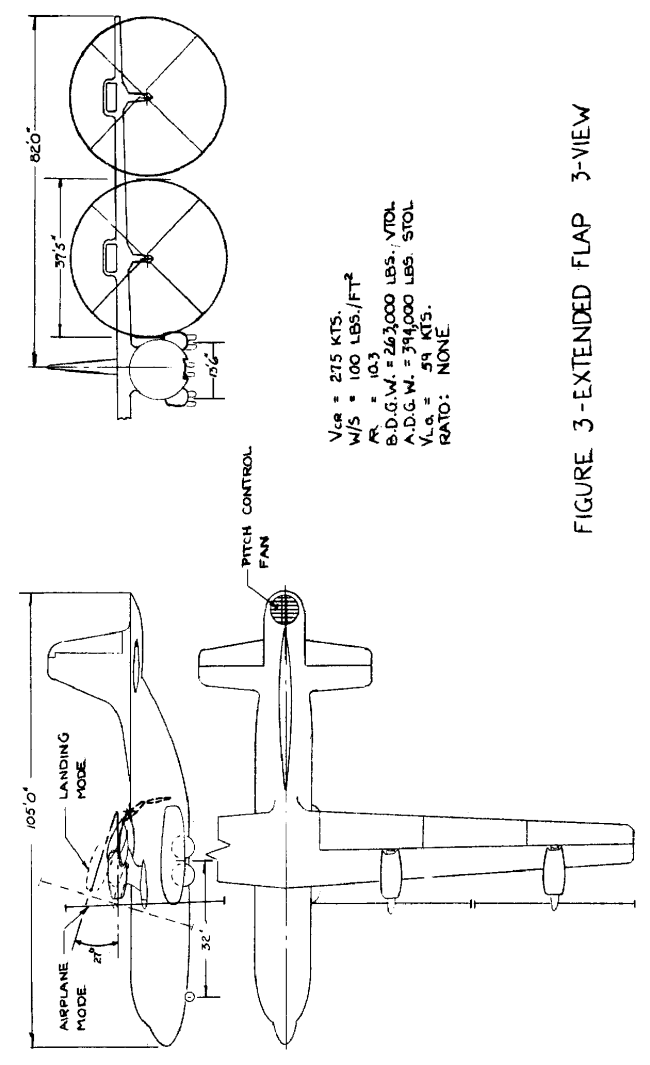Somewhat like the preceding tilt-wing C-130, this concept called for a wing that would tilt only a few degrees, but would have a complex series of extendable flaps on the trailing edge. On the underside of the wing, this would force that portion of the thrust directly downwards. On the upper surface of the wing, the Coanda Effect would do much the same, directing the thrust downwards.
Note that while the turboprop engines are mounted slightly above the leading edge of the wing, the props themselves are located well below. This was done to locate as much of the thrust below the wing as possible, and to have the bulk of it directed against the flaps. A complex and almost certainly prone-to-malfunction series of gearing would be required for this. As with the tile-wing, this version would not be able to take off or land conventionally, and the prop-rotors would hit the ground unless the wing was tilted up.
2 Responses to “Sikorsky VTOL C-130, Part 3”
Sorry, the comment form is closed at this time.

I hate to tell you this guys, but the tips of the props come down further than the landing gears goes.
You are just limited to VTOL flight whether you need to do it or not.
That’s not the way to keep total fuel consumption down.
> You are just limited to VTOL flight
No. You are limited to V/STOL. While the props can’t tilt all the way forward, they don;t need to be tilted all the way up. This would allow a rolling takeoff. Both the Osprey and the Harrier have made use of this… thrust vectored neither straight up nor straight back, but at something like 45 degrees for a longer, cheaper takeoff with a heavier payload.